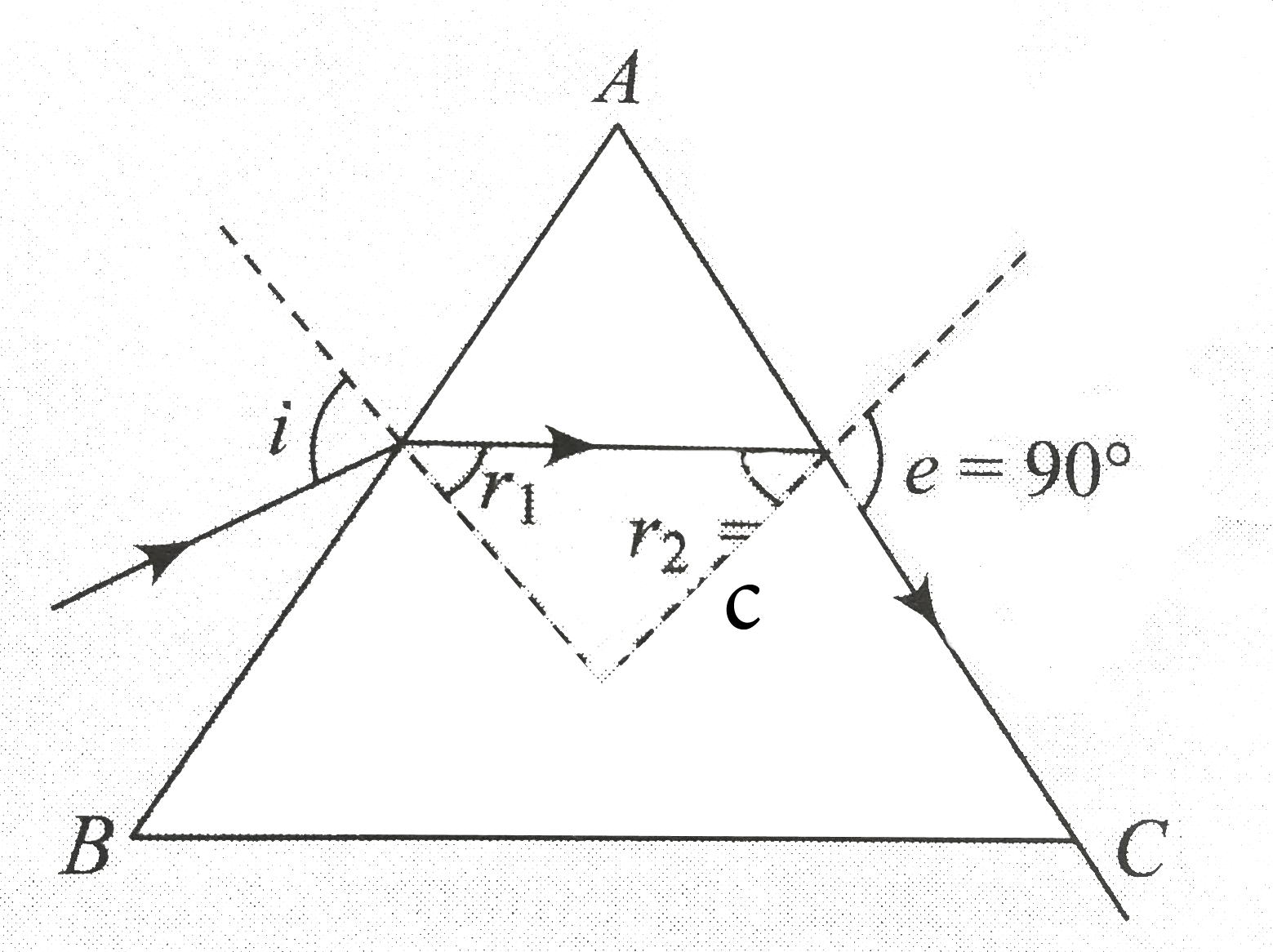Define refractive index and relative refractive index
Step-by-Step Solution
1. Definition of Refractive Index:
- The refractive index (often denoted as n or μ) is defined as the ratio of the speed of light in a vacuum to the speed of light in a given medium.
- Mathematically, it can be expressed as:
n=cv
where:
- n = refractive index
- c = speed of light in vacuum (approximately 3×108 m/s)
- v = speed of light in the medium.
2. Definition of Relative Refractive Index:
- The relative refractive index is defined as the ratio of the speed of light in one medium to the speed of light in another medium.
- If we consider two media, medium 1 and medium 2, with refractive indices n1 and n2 respectively, the relative refractive index of medium 2 with respect to medium 1 can be expressed as:
n21=v1v2
where:
- n21 = relative refractive index of medium 2 with respect to medium 1
- v1 = speed of light in medium 1
- v2 = speed of light in medium 2.
Summary of Definitions
- Refractive Index: n=cv
- Relative Refractive Index: n21=v1v2
---
- The refractive index (often denoted as n or μ) is defined as the ratio of the speed of light in a vacuum to the speed of light in a given medium.
- Mathematically, it can be expressed as:
n=cv
where:
- n = refractive index
- c = speed of light in vacuum (approximately 3×108 m/s)
- v = speed of light in the medium.
- The relative refractive index is defined as the ratio of the speed of light in one medium to the speed of light in another medium.
- If we consider two media, medium 1 and medium 2, with refractive indices n1 and n2 respectively, the relative refractive index of medium 2 with respect to medium 1 can be expressed as:
n21=v1v2
where:
- n21 = relative refractive index of medium 2 with respect to medium 1
- v1 = speed of light in medium 1
- v2 = speed of light in medium 2.
- Refractive Index: n=cv
- Relative Refractive Index: n21=v1v2
Topper's Solved these Questions
- RAY OPTICSBOOK - AAKASH SERIESCHAPTER - RAY OPTICSEXERCISE - PROBLEMS ( LEVEL-I)
57 Videos
- RAY OPTICSBOOK - AAKASH SERIESCHAPTER - RAY OPTICSEXERCISE - PROBLEMS ( LEVEL-II)
60 Videos
- RAY OPTICSBOOK - AAKASH SERIESCHAPTER - RAY OPTICSEXERCISE - EXERCISE (SHORT ANSWER QUESTIONS )
24 Videos
- PRACTICAL PHYSICSBOOK - AAKASH SERIESCHAPTER - PRACTICAL PHYSICSEXERCISE - LECTURE SHEET LEVEL-II (ADVANCED) Linked Comprehension Type Questions
4 Videos
- SEMICONDUCTOR DEVICESBOOK - AAKASH SERIESCHAPTER - SEMICONDUCTOR DEVICESEXERCISE - EXERCISE - III
3 Videos
Similar Questions
Define refractive index of a medium.
View SolutionA biconvex thin lens is prepared from glass of refractive index μ2=32. The two conducting surfaces have equal radii of 20 cm each. One of the the surface is silvered from outside to make it reflecting. It is placed in a medium of refractive index μ1=53. It acts as a
View SolutionA lens behaves as a converging lens in air and a diverging lens in water. The refractive index of the material is (refractive index of water =1.33)
View SolutionAn optical fibre having core of refractive index √3 and cladding of refractive index 1.5 is kept in air. The maximum angle of acceptance is
View SolutionAbsolute refractive index of a medium is X. Refractive index of same medium w.r.t to air is Y and absolute refractive index to air is Z. Then the relation between them is
View SolutionA step index fibre has a relative refractive index difference of 0.86% Estimate the critical angle at the core-cladding interface
View SolutionA ray of light with wavelength 5000 nm travelling from a medium with refractive index (32) suffers partial reflection and refraction in a medium of refractive index (43). Find wavelength of reflected and refracted ray.
View SolutionA sept index fibre has a relavitive refractive index of 0.88%. What is the critical angle at the core-cladding interface?
View SolutionCalculate the critical angle of glass and water pair. (The refractive index for glass is 1.50 and refractive index for water is 1.33).
View SolutionWhat should be the minimum value of refractive index of a prism, refracting angle A, so that there is no emergent ray irrespective of the angle of incidence?

View Solution
